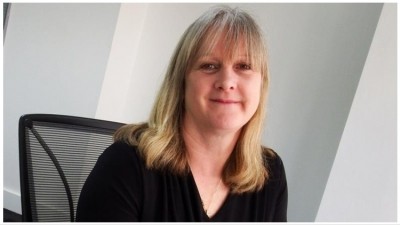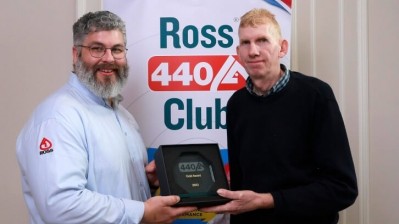The Talent Poole
The art and science of building highly effective teams

The effectiveness of a leader is almost entirely dependent on the team or teams responsible for delivering the overall vision.
In the food sector, these teams can be small and specialist or, conversely, whole manufacturing sites. What is common to their success is the way a leader coalesces the talents and motivations of all the players to perform as one, towards a common goal.
There are probably more clichés associated with teams and teamworking than any other aspect of leadership. In my discussion with Two Sisters Food Group’s technical director, Helen Sisson, we covered the most commonly used one early on: “There is no ‘I’ in ‘team’ and I stand by this.”
“I strongly believe there is no room for individual egos when it comes to the functioning of a good team. To reinforce this, I have introduced a set of team values in addition to our organisational values. These are: ‘We are one team’, ‘A winning team’; ‘Always have a can-do attitude’ and ‘Honesty with each other’. All of my team are expected to work to these values, and any new member of the team is introduced to them right from the start.”
Building a strong team
The introduction of new projects or structures may provide the luxury of being able to form a team from scratch. However, more often, leaders will inherit an existing team and so may need to gradually adjust the team over time.
Team composition is, of course, critical, as Sisson reflected: “When thinking of a team’s structure, I’m obviously interested in key competencies – the functional capabilities around the roles within the team. But, beyond that, I am also looking at individuals’ experiences and backgrounds to ensure diversity in the team – I don’t just want peas in a pod. For example, behaviourally, some may be more creative but not necessarily ‘completer finishers’. It’s critical to get the right balance within the team.”
Beyond capability
Whether appointing or promoting from within the business, or recruiting new talent from outside, it’s important to identify and select individuals based on these wider factors, not purely on technical competence. Many standard job interviews focus primarily on technical experience and capability, which risks bringing in people who may be highly competent but who could potentially destabilise a team.
Assessing against this wider set of criteria requires careful consideration when defining the person specification. Sisson agreed: “When we interview, we are assessing as much for their characteristics and behaviours based on what is best for the team. It’s also about finding people with the right organisational fit. The meat and chilled food sectors are very fast paced categories, and we need people who will thrive in this environment.”
Supporting each other
A good indication of a well-functioning team is how well people support each other. Individuals need to have clarity over their specific roles but also how and when they need to work together and support each other, as Sisson reflected: “People need to trust each other and know they have each other’s backs. Everyone has ups and downs so, when things get tough, people need to feel they can ‘phone a friend’ – and that doesn’t need to be me!”
She continued: “My sustainability and agricultural directors work very closely together on common objectives around our work on decarbonisation. Similarly, as part of our work on innovation, we are trialling new bits of equipment across two divisions with two team members needing to work together on the validation.”
Team dynamics
All teams will have their own characteristics and ways of working. A kick-off meeting can be useful mechanism to explore how the team can best function. Ideally this will provide an introduction to each of the team members including their capabilities, but also their personalities and what they can bring to the team.
It will also offer the opportunity to agree decision-making processes, the best format for internal communication and, of course, personal and team objectives and measures of success. Too often, in a rush to get a project underway, many of these issues are assumed or left to be worked out as the team progresses.
Of course, even if the team is set up well from the start, a team’s dynamics will be constantly shifting and it’s therefore critical for a leader to keep track of how the team is working. Sisson agreed: “It’s really important to keep a watching eye on the team dynamics and how the whole team is functioning.
“There are several touchpoints through which I can track the dynamics of my team. I have one-to-ones with each of my senior team as well as a Friday ‘check-in’ with the whole team. In addition, there will be more detailed meetings relating to specific issues. It’s about providing an environment where we can all discuss issues openly and honestly and create shared learning.”
The psychology of teams
A considerable amount of research has been undertaken over the years into the psychology of individuals and teams in the workplace. Analysis, either through formal psychometric assessment or merely through self-assessment has helped individuals to better understand their roles in a team and also better appreciate what others bring to the team.
Models such as Belbin Team Roles or Myers Briggs Type Indicator (MBTI) can help open up meaningful discussions and self-reflection which, in turn, can improve team dynamics.
Sisson outlined her experience: “There are various models that can be utilised and it may be down to personal choice, however we are finding the McQuaig 360 degree leadership model and self-development module is working really well and making a difference for our teams.”
That said, it is important that these discussions are properly facilitated, otherwise there is a risk that participants will draw wrong or even unhelpful conclusions from the outputs of these tools.
The power of empowerment
A well-functioning team will not need to be overly reliant on its leader. If truly empowered, the leader may set the direction but much of the delivery and even the monitoring and reporting of progress will be driven by the team. This was certainly Sisson’s aim: “It’s important to be there to inspire and motivate but without doing the job for them. My job is to empower those in my team which I hope I do by having transparent and open relationships and strong two-way communication.”
Cross-functional teams
A functional team, with members reporting directly to a line manager is one thing. However, the food sector is making far more use of cross-functional or multidisciplinary teams, which bring additional layers of complexity and challenge. Multi-disciplinary teams may be composed of a wide range of disciplines and may even consist of individuals from different organisations or sectors.
Team members need to understand and respect each other’s technical capabilities and, perhaps, even accommodate different forms of jargon and ways of working.
Sisson added: “I refer to it as ‘matrix management’ and think this is a great way to recognise and encourage diversity. Cross-functional working needs to be mapped out across the business. In my case, technical crosses so many areas of the business, including sustainability, modern slavery and human rights, HR and IT. So, it’s important we can work effectively together.
“As an example, I have a data analyst who acts as a great conduit between technical and IT, because he understands the IT language. We have strong IT systems that were built in-house and so we’ve needed to have a strong collaborative relationship with the IT team that supported the development.”
It’s not about luck
As we were concluding our discussion, Sisson commented: “Being successful is all about the team and I have been so lucky for so long with the teams I have worked with.”
Knowing Sisson and her track record, I would say there is very little luck involved. As a leader, Sisson’s continued success over the years is down to her carefully considered and thoughtful leadership of her teams.
If you enjoyed this column, why not read last month's leadership interview with the Food & Drink Federation's CEO, Karen Betts.
Helen Sisson
Helen Sisson has been in the food industry for more than 30 years previously working for companies such as Greencore, Sutherlands, Hazelwood Foods and prior to this within the dairy sector.
She joined 2 Sisters Food Group in January 2019 as group technical director where she leads the technical, health & safety, sustainability and agriculture functions. In this role, Helen directs the strategy and governance for each of the functions.
Helen was directly involved in the establishment of the Food Industry Intelligence Network (FIIN), of which she is a director and co-chair.
She also currently sits on several external panels, including membership of the BRCGS International Advisory Board, Modern Slavery Intelligence Network Board, and IGD Technical Leadership Forum.
Helen has served as a trustee of the Food redistribution charity, FareShare and as a non-executive director of Campden BRI.


















